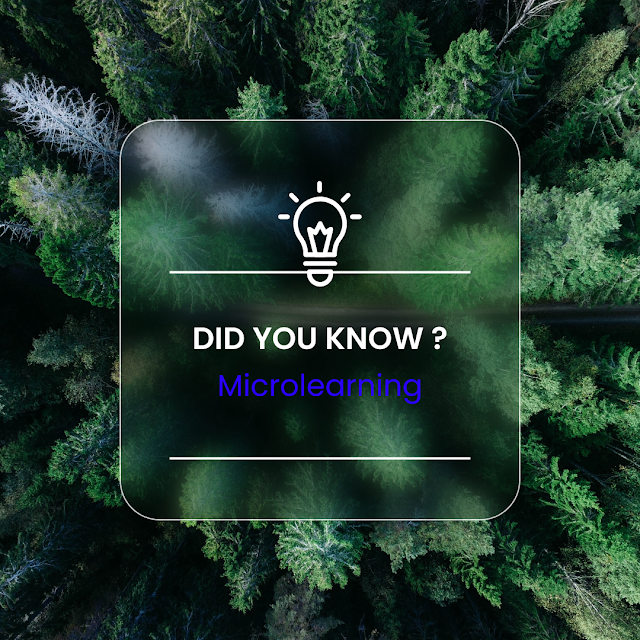The Future of Learning: How Microlearning is Changing the Way We Learn.
Microlearning is a modern approach to learning and
development that delivers bite-sized chunks of information through mobile devices.
It is designed to be quick, easy, and effective, making it perfect for busy
professionals and students who want to learn something new but don't have a lot
of time to spare. The rise of microlearning is changing the way we learn, and
it is becoming increasingly important for educators and trainers to understand
how to implement it effectively. In this article, we will explore how
microlearning is changing the way we learn and how it can be used to improve
education and training in the future.
What is Microlearning? Microlearning is a method of delivering small pieces of information to learners in short intervals. These small pieces of information can take the form of videos, podcasts, infographics, or interactive quizzes. The goal of microlearning is to help learners retain information better, as they are able to focus on a specific task or concept without getting overwhelmed. Microlearning is highly adaptable and can be used in a variety of settings, including the workplace, school, and personal development.
How Microlearning is Changing the Way We Learn.
2.2 Enhancing engagement and motivation Another way that
microlearning is changing the way we learn is by enhancing engagement and
motivation. Microlearning is highly interactive and engaging, and it can be
used to increase engagement and participation in learning and training
programs. Microlearning can be delivered in a variety of formats, including
videos, podcasts, infographics, and interactive quizzes which can help to keep
learners interested and motivated. In addition, microlearning can be made interactive
and gamified to make the learning experience more engaging and fun.
2.3 Promoting lifelong learning Microlearning is also
promoting lifelong learning, as learners can access microlearning content
throughout their lives, keeping their skills and knowledge up-to-date. This can
be particularly beneficial for professionals, as they can continue to develop
new skills and stay current in their field.
How Microlearning Can be Used in the Future.
3.2 In education In education, microlearning can be used to
supplement traditional classroom teaching. For example, students can use
microlearning to review key concepts or skills before a test or to gain
additional knowledge on a topic they are studying. Microlearning can also be
used to support self-directed learning, which can help students take more
ownership of their learning and feel more motivated.
3.3 For personal development Microlearning can also be used
for personal development, such as learning a new language, skill or hobby. With
the wide range of microlearning content available, learners can pick and choose
the topics that interest them, which can help to make the learning experience
more enjoyable and satisfying.
In





Comments
Post a Comment